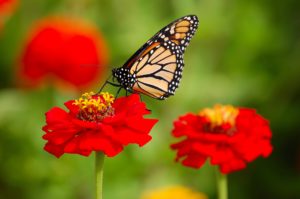 Butterflies–symbols of beauty, nature, freedom and hope–are universally adored. Unfortunately, urban expansion has caused a decline in many butterfly populations. You can attract butterflies to your garden, and have fun doing so, by planting a butterfly garden.
Butterflies–symbols of beauty, nature, freedom and hope–are universally adored. Unfortunately, urban expansion has caused a decline in many butterfly populations. You can attract butterflies to your garden, and have fun doing so, by planting a butterfly garden.
What is Butterfly Gardening?
Butterfly gardening is a concept designed to conserve the natural environment and attract butterflies back into populated areas through native plant gardening. When land is developed, native plants are usually destroyed in the construction process and replaced with commercially popular exotic varieties. Because the native butterflies cannot complete their life cycles on the new plants, they are forced to travel further and further away in search of the naturally growing species they need to survive.
All butterflies have a life cycle which includes a leaf-eating caterpillar and a free-flying adult butterfly. Both stages need food. Caterpillars eat leaves of certain wild plants, while flying adults eat the sugary nectar from various flowers. There must be food for both adults and their caterpillars nearby.
If you live in the suburbs and there are partially wild forest edges or unmowed fields nearby, you can attract butterflies to your garden simply by planting flowers. They will visit your garden to feed and find mates, but will lay their eggs and complete the rest of their life cycle in nearby weedy fields. If you live near the city, it may be necessary to provide both flowers and larval food plants.
Proper Layout to Attract Butterflies to Your Garden
There are several considerations in laying out a butterfly garden. First, butterflies will only fly around flowers that grow in bright sun.
Second, choose a mix of annual and perennial flowering plants which are good sources of nectar for the hungry adult butterflies. Butterflies prefer to alight on a flower which points almost upward. They prefer flowers with heads of small clumped flowers, or flowers with broad petals which act as landing pads for them to rest while they eat.
Flower color is not critical. It is best to stick to the simple varieties. Excellent choices for our area are asters, black-eyed Susan, lantana, blazing star, milkweeds, phlox, thistles, coneflowers, dogbane, zinnias, buttonbush, butterfly bush, moon mist flower and salvias.
Butterflies are extremely sensitive to insecticides; do not use pesticide dust or sprays. Yard fogging and mosquito spraying programs take a terrible toll on these beauties.